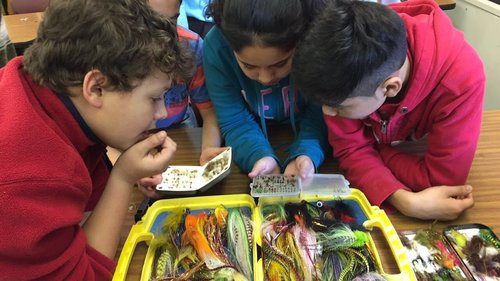

Grayson County & BRDC: A Relationship Worth Investing In
On the sunny Sunday of March 1, 2020, over 50 members of the Grayson County community joined Blue Ridge Discovery Center staff and board members at the New River Wildlife and Conservation Club in Fries, Virginia, to “make new friends, build relationships, and strengthen our community.”


Learning about Amphibians & Aquatic Insects
BRDC has been busy with education programs, working with Galax Middle School, Fries School, Fairview Elementary, Grayson Highlands, Independence Elementary.
Grayson County's fourth grade students participated in the Natural Heritage Program with an emphasis on salamanders, toads, and frogs. Students learned about salamanders commonly found in the Blue Ridge.

Blue Ridge Discovery Center’s Fall Mushroom Walk
Twelve curious hikers joined Ken Crouse for his second annual BRDC mushroom walk on Saturday, September 19th. We met at Cox’s Chapel Low Water Bridge at 10am for a brief introductory show-and- tell prior to carpooling to a location across the river and into the woods.

Nesting Bald Eagles Discovered along the New River in Grayson County, VA!
Every trip outdoors holds an opportunity for discovery, but a trip down the New River always seems to be teeming with wildlife. On this particular trip, Ellie and Roald discovered a successful nesting pair of Bald Eagles! This is a landmark discovery many of us have been looking forward to for years.